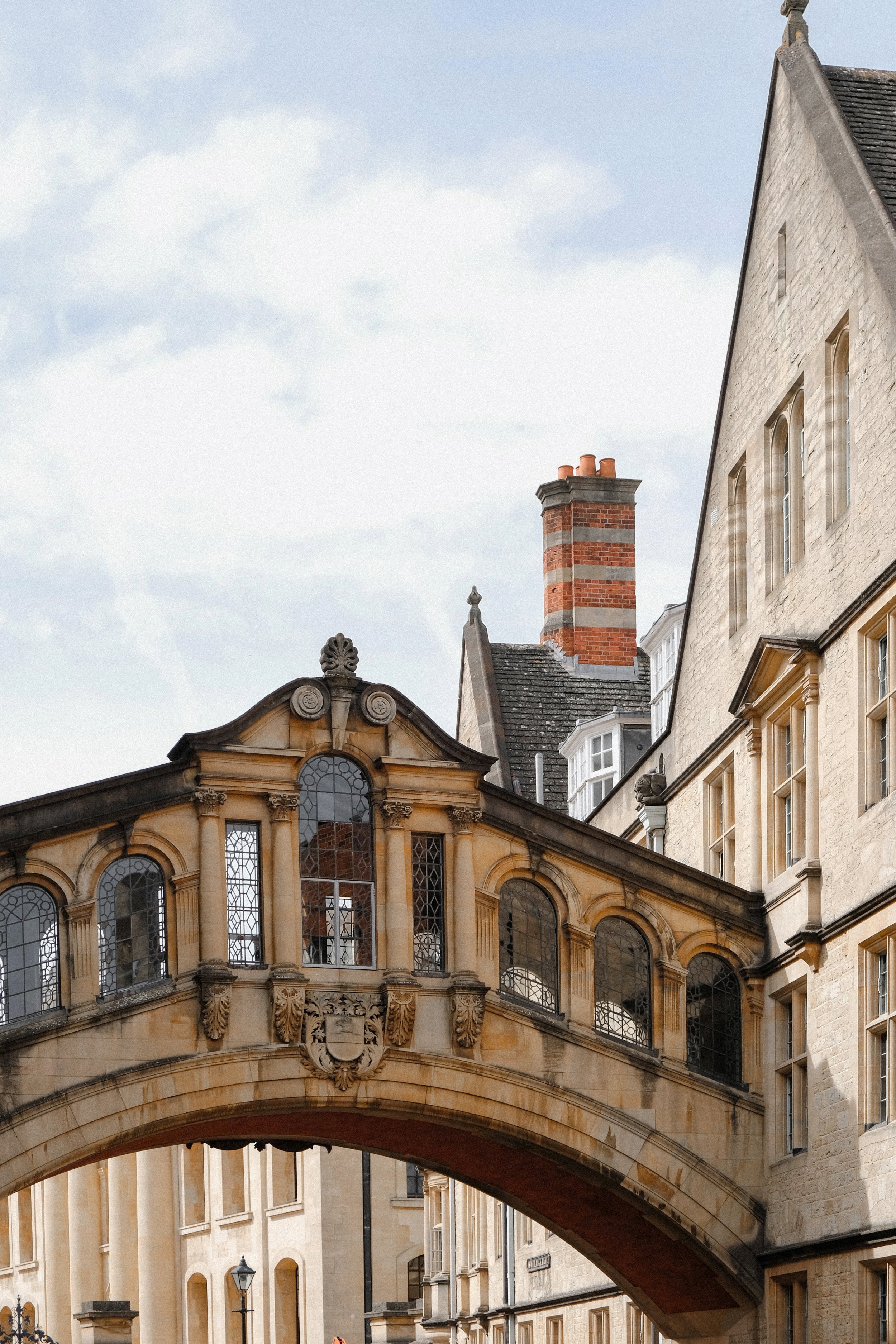A Day Trip to Oxford
Britain is full of fantastic places, from historic cities, rural countryside, and quaint villages. We spent a Saturday in one of the country’s most famous cities: Oxford, a city known for its illustrious university, enchanting architecture, and Britain’s first public museum, the Ashmolean. In celebration of Julie’s dad’s birthday, who used to live in the city, we enjoyed a day of April sunshine exploring all of Oxford’s charm.
We parked at the Thornhill Park and Ride and jumped on a bus to central Oxford. This is one of the best ways to get into the city, especially as you get a good view of the Headington Shark, a 25ft-long fibreglass and steel sculpture of a shark tail sticking out from the roof of a terrace house. The sculpture was designed by the home-owner’s father and installed without planning permission on 9 August 1986, starting a six-year battle to keep it. Whilst it was a polarising feature of Headington’s quaint terraces, it was finally allowed to permanently stay after Michael Heseltine, Secretary for the Environment, made a personal ruling after visiting the public art piece. Whilst quirky at first glance, the sculpture speaks to themes of nuclear power, disarmament, military intervention, and war. It was erected to coincide with the anniversary of the dropping of the second atomic bomb on Nagasaki and also represents opposition to bombing and the destruction of people’s homes and lives. Today the sculpture is as popular as ever. Top tip: sit on the left-hand side of the top level of the double-decker bus to ensure the best of view of this famous Oxford landmark.
Whilst wandering the backstreets we stumbled upon the most charming shop: Objects of Use. It’s a hardware store, home to a unique selection of everyday household tools, conscientiously sourced from around the world. Their collection of candles, brooms, knives, stationery, utensils, toys, and tools brings together centuries of tradition. Their ethos is an appreciation of the value of the hand-made and a rejection of the prevailing throwaway culture.
We then headed for brunch in Oxford’s Covered Market, a place that dates back to the 1770s and is home to over fifty independent traders, as well as an excellent selection of eateries. We enjoyed brunch at Columbia Coffee Roasters, sharing a pastrami and Emmental bagel, waffles with fruit and Biscoff spread and a huge cinnamon bun. We then wandered through the various aisles, admiring the beautiful cut flowers, fresh produce, and independent shops. As big bibliophiles, we were particularly taken with Gulp Fiction, a perfectly curated bookshop with a bar and coffee shop inside. It also offers you a free hot drink with certain book purchases.
After brunch we headed to the Ashmolean, taking the scenic route and passing the Radcliffe Camera and Hertford Bridge (most commonly known as the Bridge of Sighs).
The museum came into existence in 1682 when Elias Ashmole, a wealthy antiquary, gifted his collection to the University of Oxford. One year later is opened as Britain’s first public museum and the world’s first university museum. Though the collection has evolved considerably, the founding principle of the museum remains: that knowledge of humanity across cultures and across time is important to society.
We wandered through every floor of the museum, starting on the ground floor to take in their impressive collection of Egyptian, Greek and Roman antiquities, moving to the third floor which is for European art. We particularly liked the gallery dedicated to over ninety still-life paintings by seventeenth century Dutch and Flemish artists. The paintings cover a variety of subjects, including spectacular arrangements of flowers and ripe fruits. We loved Jan Soreau’s Still Life of Fruit and Flowers which depicts a decorated ceramic bowl full of furry peaches and waxen plums, surrounded by delicious details of glossy red cherries; freshly cut cornflowers and carnations and a woven basket brimming with shiny green and red grapes. Ottmar Elliger’s Still Life with a Lemon and Pink Roses was also very evocative. The lemon has been peeled to reveal the translucent flesh of the fruit, complemented perfectly by the dusky pink of the roses. We also adored Cornelis Kick’s arrangement of hydrangeas, tulips and hibiscus and Simon Pietersz Verelst’s portrait of apple blossom. In the more contemporary galleries, we loved including Camille Pissarro’s Bouquet of Pink Peonies and A Chelsea Street by Malcolm Drummond.
We then headed to the River Cherwell for a circular walk along the river path. To get to the river we walked through several colleges, passing the cascading pink clematis in front of Trinity College and the lilac bushes lining the old walls of other lovely buildings.
It was a glorious April day. People were punting and sitting by the river reading and day drinking. The air was filled with birdsong, a gentle breeze rustled the leaves, fritillaries lined the banks and mallard ducks allowed the river’s flow to take them with it.
From Magdalen Bridge, we walked past the Botanical Gardens, Christ Church meadow and Jubilee Bridge, coming out where the River Cherwell meets the Thames. We continued along the path orbiting the meadow, which was lusciously green, and came out at the bottom of Broad Walk.
Before hopping back on the bus, we stopped for an afternoon pick-me-up at The Independent Café. We could not have asked for better weather to explore one of Britain’s most beautiful and historic cities. Sitting outside in the early afternoon warmth, sipping on iced chai lattes and peach teas, was a lovely reminder that summer is just around the corner.

































